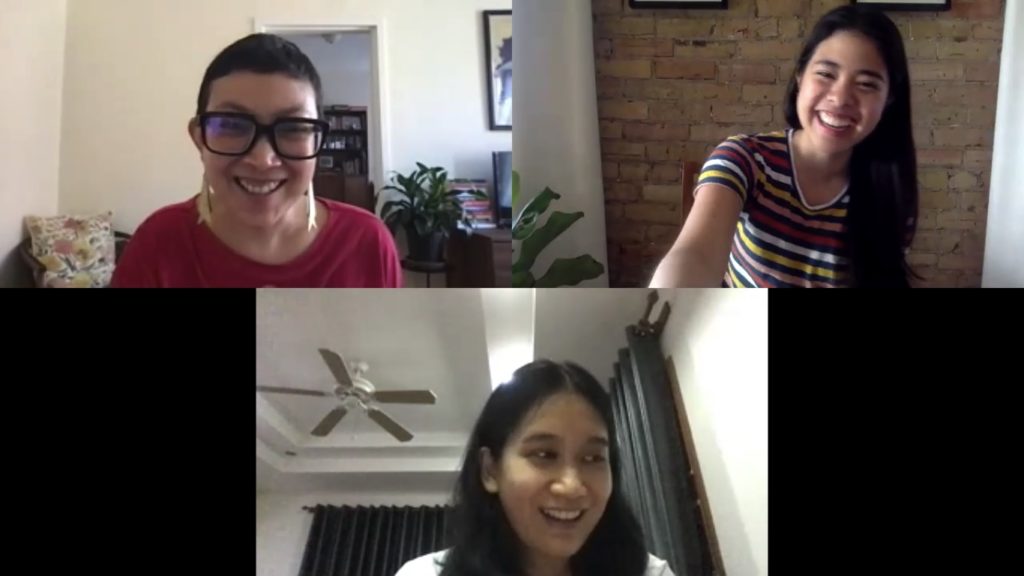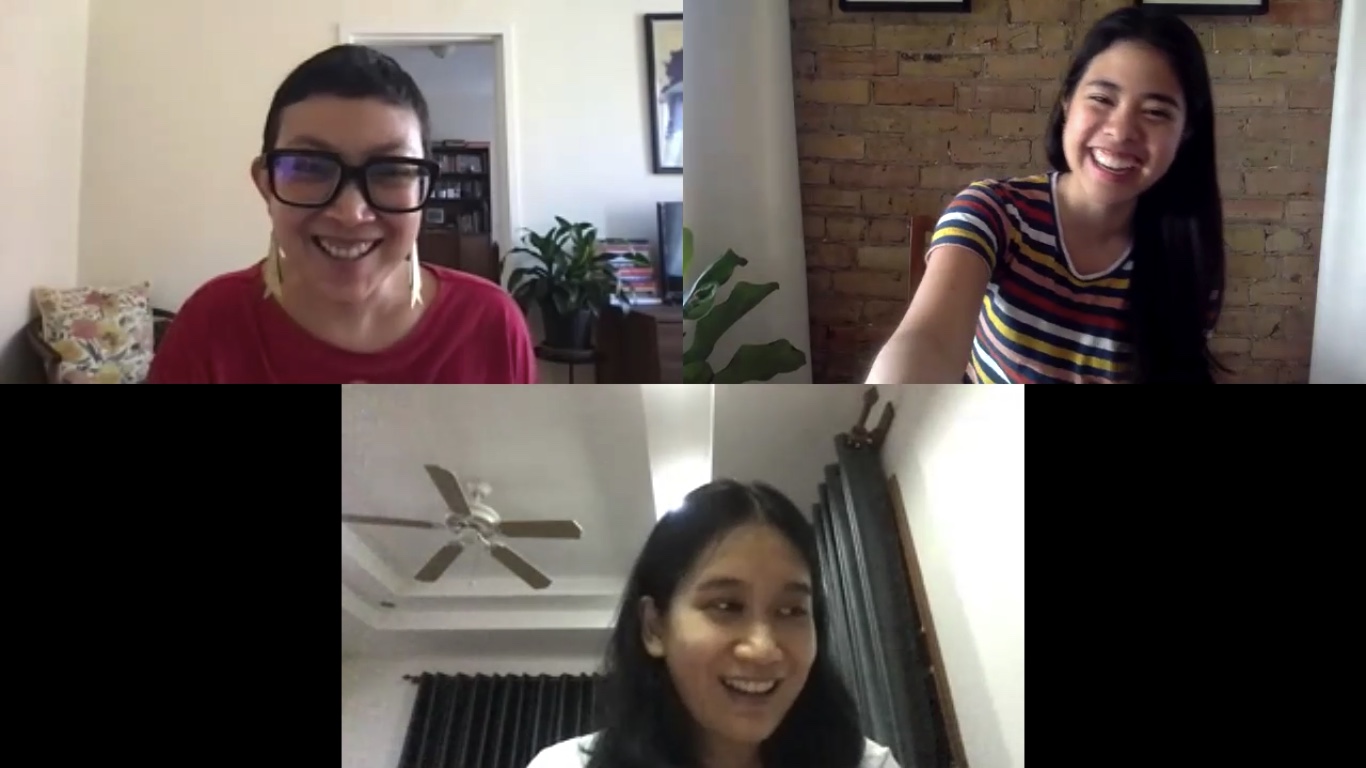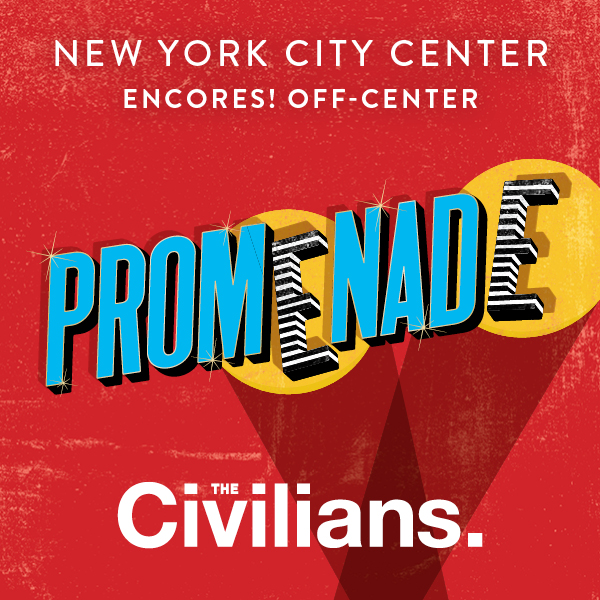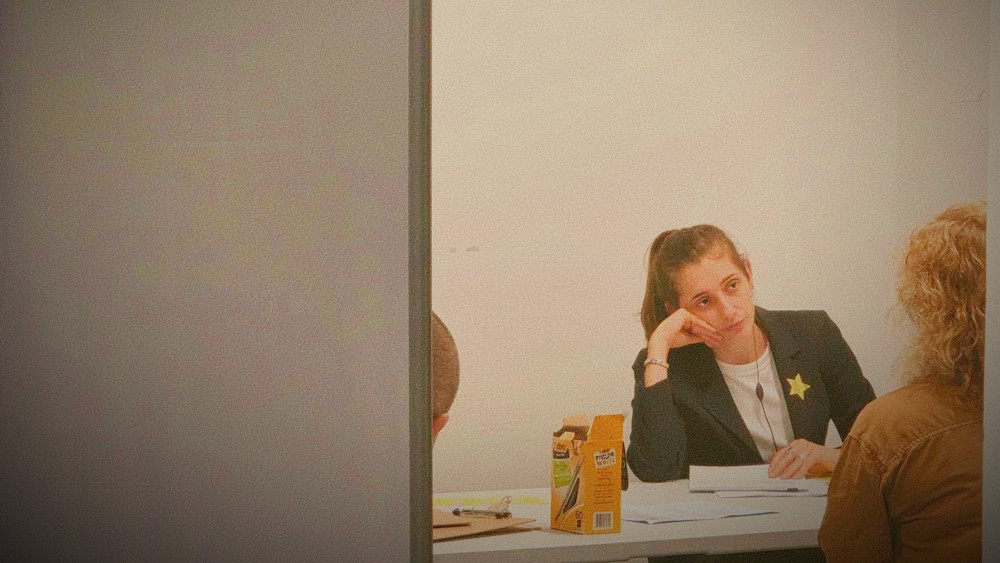Take a step inside the creative process with excerpts from a creative meeting between the makers of Sunwatcher, a Noh-inspired musical about the true story of Japanese female astronomer, Hisako Koyama. The team, made up of librettist Isabella Dawis, composer Tidtaya Sinutoke, director Nana Dakin, and producer/cultural consultant, Ikumi Kuronaga, is a part of The Civilians’ R&D Group, and will have their work presented in the Findings Series this June. Read sections of their conversations on Sunwatcher below:

THE PROLOGUE SOUND & VISUALS:
Nana Dakin (director): How are you both feeling about the sound of the prologue?
Tidtaya Sinutoke (composer): A lot of things right now music-wise are approximate when it comes to timing. We probably need to be in a room with actors to experiment.
Isabella Dawis (librettist): I think that right now, how the prologue sounds fits with what the prologue does. I guess the question going forward is, just making sure that the prologue is doing what we want it to do.
This is one of the things that I wanted to talk about with you, Nana. Even the sound of the taiko drums at the beginning, for example… The prologue is not Noh. It’s kind of a departure from Noh structure. Just the fact that we even have a prologue is not Noh-ish.
Nana: In terms of what’s happening onstage, my understanding is that part of the experience of watching a Noh piece is that it begins as a complete blank slate, and elements enter one by one. So very slowly, the stage becomes populated with the things that are needed to tell the story. And that was what I thought about when listening to this prologue. So it could be true that the storytelling device of a prologue is not in the world of Noh, but the way in which we experience it onstage can be — I can imagine a world in which slowly, one thing at a time, each element is coming in to set the scene for the story that we’re about to tell.
Isabella: That’s good to hear. Basically, what I want the prologue to do is some of the heavy lifting that we wouldn’t have to do if this was a Noh play and everybody understood Noh conventions. For example, we have to set up the myth of Amaterasu, so that people will understand her story. And if we were doing a Noh play with Amaterasu as the goddess, we wouldn’t need to do that.
But there is something about Noh theater where, just like you’re saying, Nana — there’s this kind of metatheatricality of the actors entering as the actors, or the musicians entering as the musicians, knowing that we are here to conduct this performance, and being aware of the theatricality of it. I definitely think it’s useful for our prologue to do that. Our prologue is, maybe, an extended and dramatized version of what that would be in a Noh play. The actors would just come in, the chorus is going and sitting over there, we understand what’s happening. The wheels are being put in motion for the rest of the story.
THE AUDIENCE:
Nana: It’s also interesting to think about the question of, how will this piece be experienced through the eyes of people who are familiar with Noh conventions, and people for whom this will be completely new? And so the question that came to mind for me with this prologue is, is this a story that we assume the audience does not know? I feel like that impacts part of the way that a story gets told, tonally, or in the delivery of the performance. It feels really different for me to tell you both a story where I say “once upon a time,” and then tell you something that I know you don’t know. Versus if I tell you a story that I believe we have in common, that we have told each other before, that we have heard many times.
Isabella: Yeah. For sure, this prologue is beginning to tell the story of the myth that will then eventually get picked up by Amaterasu, who I think will actually, with the help of the chorus, enact the rest of the story too.
But what’s interesting is, a lot of people don’t know anything about our story! [laughs] A lot of people don’t know who Hisako is. A lot of people don’t know what Operation Meetinghouse was. I think many people might think that because we’re doing something that’s set in World War II Japan, we’re going to be talking about the nuclear bombs. But this is something completely different. And, a lot of people aren’t familiar with Noh. And a lot of people aren’t familiar with Japanese mythology.
Noh in Japan has the benefit of this bedrock of the audience’s understanding and prior knowledge going in. We all understand, we all know these characters, we all know these stories, we all know where these rituals come from — so we can elevate, you know what I mean? That’s a springboard. We can all live in this higher experience of what all those things are. I hadn’t thought about that before… we don’t have that. I guess that’s one of the challenges of doing something that’s spanning different cultures, and bringing Noh theater into American storytelling.
Nana: Yeah. I think it’s also really interesting to hold onto the idea of two kinds of audience members. And maybe we’ll find out that there’s more than two kinds. But the kind for whom, exactly as you’re describing, Isabella, everything is going to be new — the form, the history, the content, the characters, everything. But then there is also the audience member who will know all of those things. I can imagine that audience member.
Nana: I’m curious whether either of you feel like you have an ideal audience in your mind?
Isabella: Some of the first people who expressed enthusiasm for seeing this piece staged were the people who work at the National Museum of Nature and Science in Tokyo. And we started writing this piece during the pandemic already, so everything has been virtual. I’ve had an awareness in the back of my mind, that it’ll be nice when the folks at the museum in Tokyo see and hear what we’ve written.
On the other hand, this piece isn’t 100% one thing or the other. It’s not a Noh piece. So in a way, it’s trying to appeal to an audience of mixed cultures, I think.
And this is maybe a bit tangential, but something that’s interesting, when we talk about people who “know” — I didn’t go to drama school, but people who learn about Noh in drama school, I think they have a perception of what Noh is. And maybe it’s pretty true. But people who have had a quick primer on Noh, I think in a way this piece doesn’t conform to what they think Noh is. They might think that Noh is just, everything’s happening at a glacial pace, and super-hyper-stylized and “out there.” And that’s not really — this piece draws on the spirit of Noh but not in the way they might expect.
You know, we thought a lot about the building blocks of Noh and we structured this piece around the same Noh structure. We’re constantly drawing from Noh as a touchstone. But there are ways in which this piece is not Noh-ish, what people think Noh-ish is.
Tidtaya: I agree with that. We’re adapting the Noh structure and hybridizing it with the musical theater form. The travel song actually in a way could be an “I want” song.
Nana: I think it’s super interesting what you said, Isabella, that maybe the ideal audience for this piece is an audience of mixed culture. I am a mixed culture audience member for sure. And I think what that means for me is that, actually, I am used to being exposed to unfamiliar things. And I am used to having to use my curiosity to try to understand, “what am I seeing?” I get drawn in by the mixture of things that feel both familiar and unfamiliar.
To learn more about The Civilians and to access exclusive discounts to shows, join our email list at TheCivilians.org.










